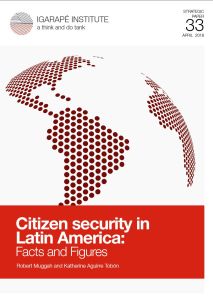
Recommendation
When it comes to sheer numbers, US murder capitals such as St. Louis, Baltimore, Detroit and New Orleans pale in comparison to the killing fields of Latin America. Homicide statistics for cities in El Salvador, Mexico, Honduras and Brazil far surpass those of America’s most dangerous inner cities, Robert Muggah and Katherine Aguirre Tobón write in this think tank report. More than 2.5 million people have been murdered in Latin America since 2000 – and, considering rampant issues with underreporting of crime within the region, even that dizzying total might be low. The authors argue that the solutions aren’t harsher sentences or more prisons, however. Instead, Latin America needs to embark on a common-sense strategy of citizen security, allocating resources to high-crime neighborhoods and finding ways to keep young men in school or in a job. Their suggestions aren’t groundbreaking, but given the staggering scope of Latin America’s crime epidemic, a change in approach seems necessary. getAbstract recommends this report to readers seeking insight into Latin America’s stubbornly high crime rates.
Summary
About the Authors
Robert Muggah is co-founder of the Igarapé Institute and a specialist in cities, security, migration and new technologies. Katherine Aguirre Tobón is a faculty member at Institute Igarapé. She specializes in violence and citizen security.








Comment on this summary